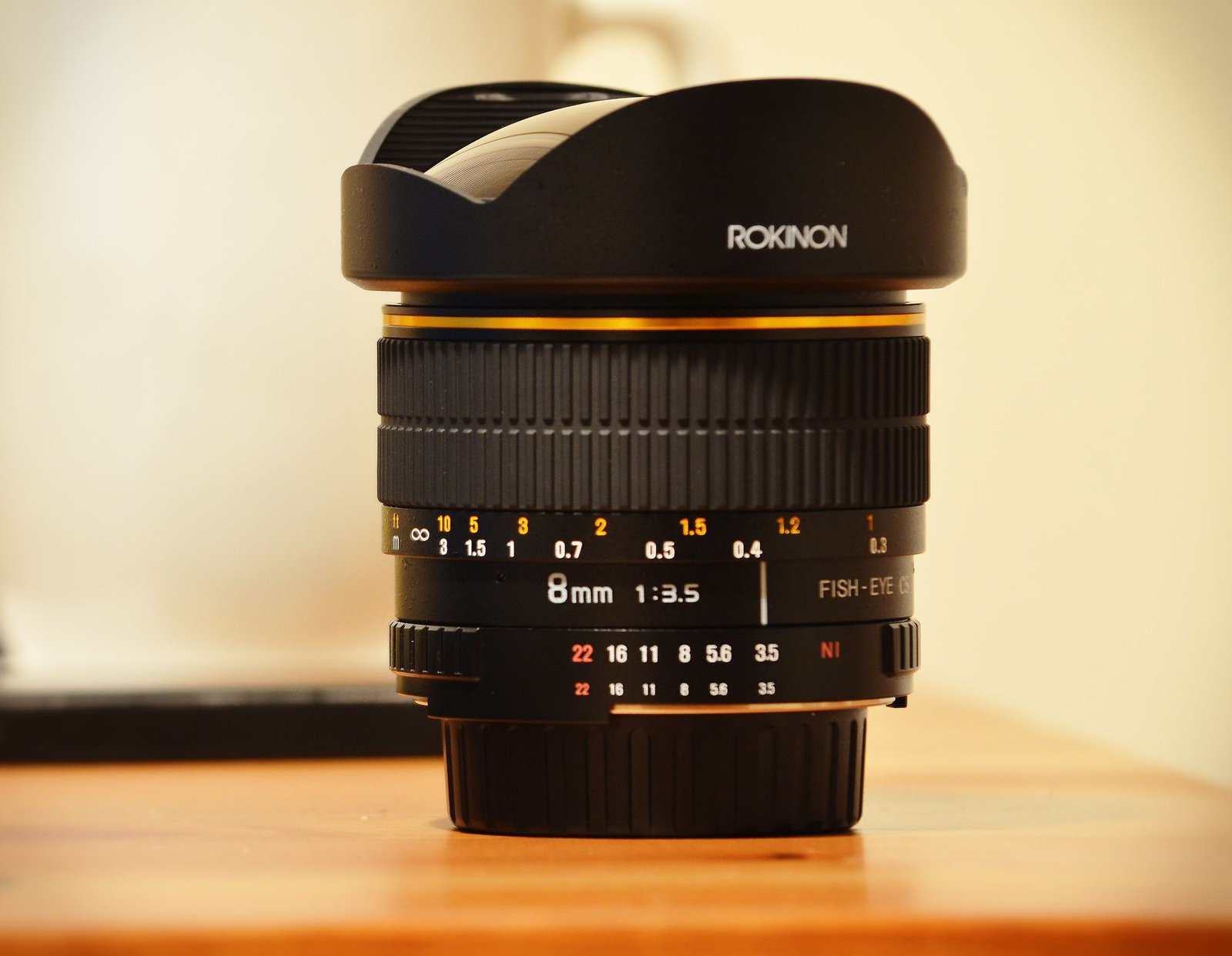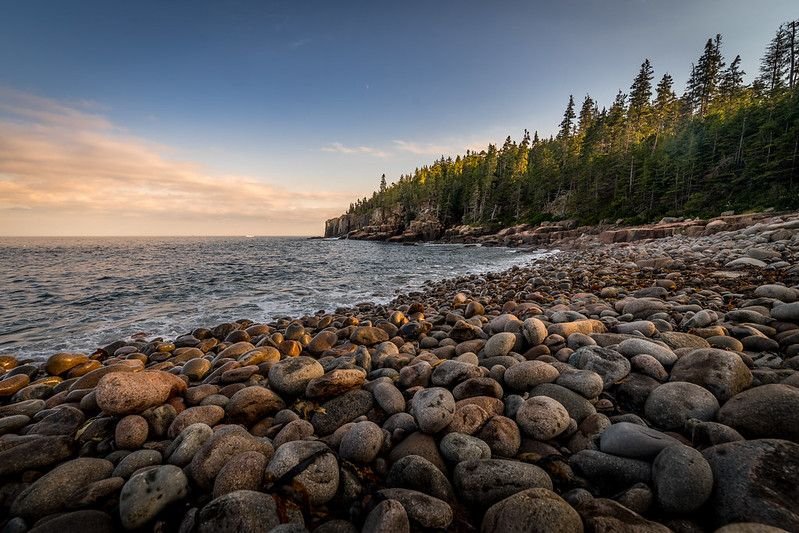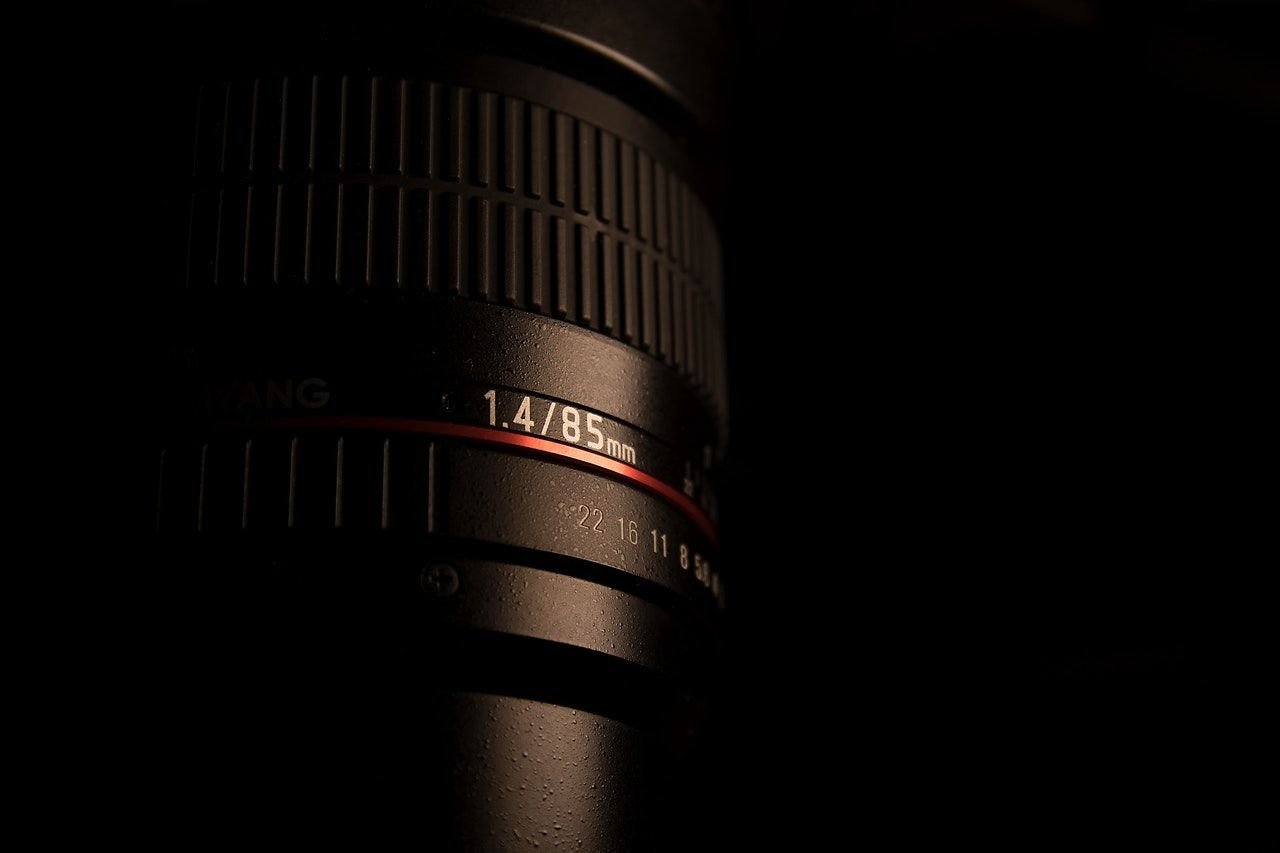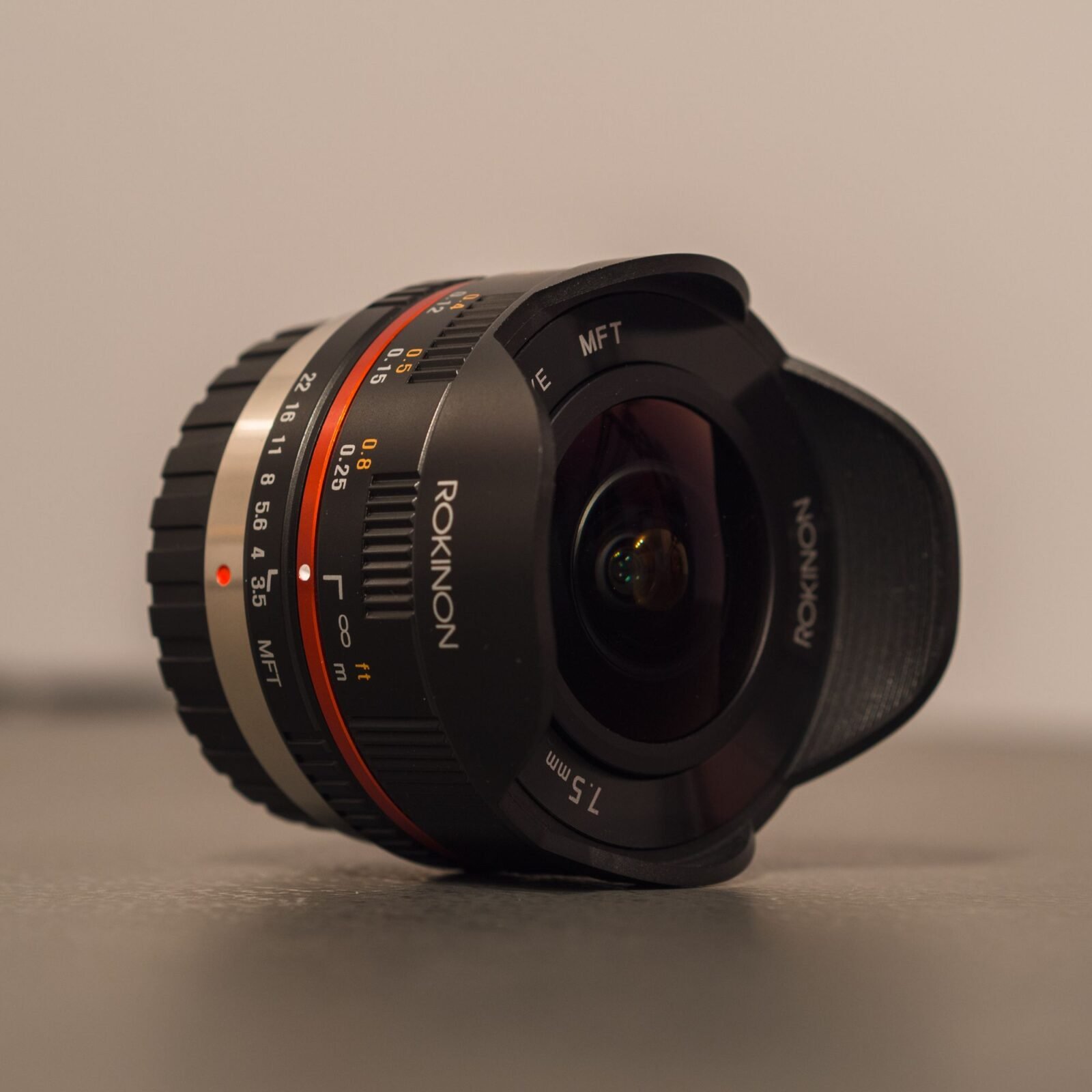Hello everyone, and welcome back to Filmmaking Elements! Are Rokinon Lenses Worth Buying for Photography? You may have come across Rokinon Lenses when searching the internet for the latest photography gear and wondered why they were so inexpensive. Is there anything else I should be aware of? Is there a problem with Rokinon Lenses? That’s what we’ll talk about in this blog right now.
I’ll be addressing using Rokinon lenses for photography rather than for videography. So, let’s get this discussion started!
The 12mm f/2.0 APS-C lens and the 14mm f/2.8 full-frame lens were two lenses that I was very interested in. Because open aperture and very wide-angle lenses allow you to get a lot of the sky on your frame, doing night sky or night photography shots is incredibly cool with 14mm.
To begin, many people believe Rokinon Lenses are relatively new, however, they are actually rather old, or the brand itself is quite old. It was made in the 1970s by a Korean business. The majority of the lenses are prime lenses with an open aperture and a unique focal length. We have a 50mm f/1.2 for APS-C in a tiny format.

14mm f/2.8 Rokinon Lenses
Let’s start with the 14mm f/2.8 lens. Most of the time, I used the lens at night to capture more of the frame. I generally shoot with a 16mm lens, so I have an extra 2 millimeters on the full-frame, which is fantastic.

There’s also a downside. You have a lens cap or hood that is permanently attached to your lens. So, because the front lens is so wobbly, you can’t just put your screw filters on. You can only use big filter holders to attach to your land suits. And those are rather costly. So, that is a negative for me, but it doesn’t matter for night-sky because people usually don’t use filters at night.
Also read- Best Tools and Softwares for Indie Filmmakers! (2022 Updated)
12mm f/2.0 Rokinon Lenses
The second lens we will bring up is a 12mm f/2.0, an APS-C lens, for APS-C cameras. It’s one of the greatest lenses you can use, and I used it on my a6000. You can buy it for a little camera if you want to shoot landscape photographs with APS-C lenses because it’s so compact when the lens hood is removed.
Compared to the a6000’s original kit lens, it’s not that much larger or heavier. As a result, it’s quite great to utilize as a stabilizer or for other purposes. Most of the time, I use it for time-lapse shots because I put the a6000 on a tripod somewhere, do some time-lapse shots, and with the f/2.0.

You can also capture some excellent night sky images without going with the ISO too high up, which is very interesting. The little lens offers a nice bokeh, which I really appreciate about it. Even though it’s only 12mm and f/2.0, it has lovely bokeh. It’s also fantastic for portrait photography. And everything for a very reasonable price. You get an open aperture and an ideal focal length, probably at the cheapest rates.
It features what I consider a must-have feature for me: the ability to screw on filters, neutral density filters, polarizers, and other accessories. Rokinon lenses are both good and affordable.

Pros of Rokinon Lenses
- They are pretty cheap.
- They are pretty small.
- Fancy focal lengths.
Cons of Rokinon Lenses
- Most Rokinon Lenses have manual focus.
- Not very sharp.
Also Read- How To Fake Golden Lighting Effect Without Golden Hour- 5 Epic Ways
Are Rokinon Lenses Worth Buying for Photography? in 2022
I will highly recommend Rokinon Lenses. I had positive experiences with them; they, too, have their own set of characteristics. They’re inexpensive, tiny, and have fancy focus lengths. As we know, most Rokinon Lenses have a manual focus, so you have to set the focus manually.
It could be a problem for people who can’t focus manually. Mirrorless cameras do not have this difficulty because their focus peaking is adequate. You can completely use the exposure simulation, which means that even if everything is entered manually, the exposure simulation will still function, which is fantastic.

There are no drawbacks when used with mirrorless cameras, but they may cause issues with larger DSLRs that can’t focus as precisely.
The other thing is that they’re not as sharp as a good premium reseller lens. They provide adequate sharpness for the price, but if you are used to super-sharp lenses, you may be disappointed at first. On the other hand, it’s not so bad for me; you get what you pay for. You can pay three times the price of a lens or even six times the price, or you can get four lenses for the price of one from Rokinon Lenses. If you’re on a tight budget and want the best results, this is the best option.
Also Read- 10 Common Mistakes Made by Amateur DP/Cinematographers
Things You Should Know Before Buying Rokinon Lenses
Before you buy Rokinon Lenses, there are a few things you should know, so you don’t end up regretting your decision. After utilizing the Rokinon Lenses, I discovered some important information that you should be aware of.
Manual Focus
The first thing to remember about Rokinon lenses is that they almost all have manual focus. Although Rokinon has lately launched a few lenses with autofocus, most of its lenses are manual focus only. If you have a newer camera with focus peaking, a Live View with zooming capability, or a large viewfinder, you shouldn’t have too much trouble focusing on these lenses.
However, if you have an entry-level DSLR with a small viewfinder, you can have difficulties focusing, so these lenses aren’t for you. Now, here, it comes down to what you shoot. If you’re shooting slower-moving subjects, portraits, or commercial work, you’ll probably be fine using manual focus. If you shoot action or sports, though, you’ll generally find it difficult to maintain focus. You might also want to consider purchasing an autofocus lens.
Built Quality
The second thing to know about Rokinon lenses is that, despite their inexpensive cost, they have excellent build quality. I’ve been using these for a couple of years and would compare them to high-end Canon, Nikon, or Sony lenses. They all have metal mounts. They do include some plastic, but you would overlook it’s really high-quality plastic.

The manual focus rings on these lenses are fantastic, especially in their latest models, which is good news because you’ll probably be manually focusing on these lenses.
Heavy
The third thing you should know about Rokinon lenses is that they are durable and quite heavy. The adapter is integrated right into the lens for use with Sony mirrorless cameras, which increases the length and weight of the lens. Despite the lack of an autofocus motor, these lenses are still heavier than typical autofocus lenses. So that’s something to think about.
When researching Rokinon lenses, do your homework, compare their weight to your current lenses, and see whether they’ll work for you. However, if you’re attempting to keep a tiny light kit, this might not be the best option.
There is no electronic chip.
Another thing to remember is that most of these lenses lack electronic chips. As a result, lens information isn’t transferred to the image, leading to some post-processing guesswork.
Rokinon lenses, new vs. old
The last thing you should know about Rokinon lenses is that their newer models are far superior to their earlier models. Say, for example, their earlier lenses like the 14mm f/2.8 and their 85mm f/1.4; for most of these lenses, you can tell if they’re older by their focus ring designs. For example, with this lens, the 85mm f/1.4, you can see that the focus ring is split into two pieces, with a line running through the center.
Their 14mm f/2.8 lens also has it. It’s something that modern lenses, like the 135mm, don’t have; you can see that the focus ring is just one continuous line. So, just by glancing at the pictures, you can tell which lenses are newer and which ones are older.
When you set their 14mm f/2.8 ultra-wide-angle lens to infinity focus, it truly focuses way past infinity. As a result, you wind up with a blurred photograph. To acquire accurate infinity focus on my lens copy, I have to adjust it to roughly a meter and a half focusing distance.
Their 85mm f/1.4 lens is likewise an older design, and it’s a little soft wide open; the newer Rokinon lenses don’t have this problem. For example, the 135mm f/2.0 is incredibly sharp wide open, so if you’re looking for a rule of thumb to decide if a Rokinon lens is good or not, I’d recommend sticking with newer designs. Because they don’t have any hardware peculiarities like that 14mm f/2.8, you can nearly be certain that they’re optically great.
Why Opt for Cine Lenses Over Photo Lenses?
When diving into the world of photography and filmmaking, the choice of equipment can make a profound difference in the end result. While photo lenses are a popular choice for many, cine lenses, like the ones offered by Rokinon, bring a unique set of advantages to the table. Here’s a deep dive into why cine lenses might be a better choice for certain projects:
- Smooth Aperture Control: Cine lenses boast t-stops instead of the traditional f-stops in photo lenses. This provides filmmakers with a continuous, clickless aperture adjustment, allowing for smooth changes in exposure during a shot, a technique often used in film production.
- Precision in Focus: Cine lenses come equipped with a gear ring on their focus barrel. This makes them compatible with follow focus systems, letting filmmakers smoothly transition focus between subjects, a critical aspect in narrative storytelling.
- Consistency in Exposure: T-stops on cine lenses offer a more precise gauge of light transmission, ensuring consistent exposure across different shots or scenes. This consistency is vital in film production where maintaining a consistent look and feel is essential.
- Clear and Dual-Sided Focus Markings: With focus markings on both the left and right sides, cine lenses offer an advantage to both the operator and the focus puller, especially in tight shooting scenarios.
- Definitive Focus Points: Unlike photo lenses, which can endlessly rotate, cine lenses have clear start and end points. This feature helps in achieving precise focus pulls, adding a professional touch to the production.
- Built for Movement: Cinematography often involves moving shots, whether it’s a tracking shot, dolly, or handheld. The design and mechanics of cine lenses are better suited for these dynamic shots, ensuring sharp focus and consistent exposure.
- Unified Aesthetics: For filmmakers, using a set of cine lenses from the same manufacturer, like the Rokinon bundle, ensures a consistent color and aesthetic across shots, making the post-production process smoother.
Conclusion
So, Are Rokinon Lenses Worth Buying for Photography? One final question remains: can you cope with the loss of autofocus? And if you can, these lenses should definitely be considered. The optical quality of their 135mm f/2.0 is outstanding; it’s easily one of the nicest lenses I’ve ever used.
I hope you were able to discover answers to all of your Rokinon lens queries, such as Are Rokinon Lenses Worth Buying for Photography? Things You Should Know Before Buying Rokinon Lenses. If you have any further questions, be sure to read through our other posts. Don’t hesitate to contact us if you have any suggestions or contribute your important feedback.





